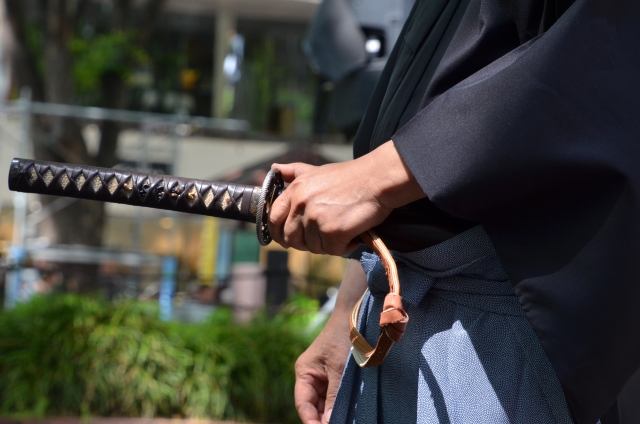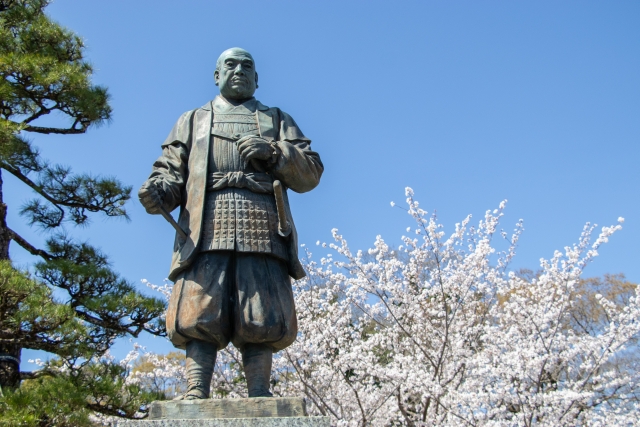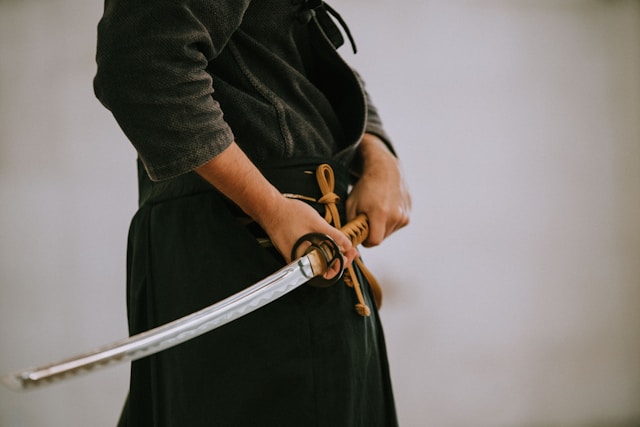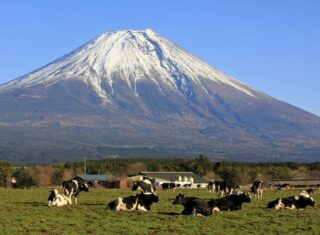- Learning Japanese
12 of the Most Famous Samurai in Japanese History | Introducing Legendary Swordsmen and Warlords
2025.09.01

When we think of the samurai, we picture warriors carrying Japanese swords. But who were the most famous figures in Japan’s long history?
Among the samurai, there were those who excelled as master swordsmen, and others who commanded vast armies as warlords. Many people wonder: who were the ones who left the greatest mark on history?
In this article, we’ll introduce 12 of the most renowned samurai in Japanese history and explain what each of them achieved. Use this as a guide to learn more about these legendary figures!
The 12 Most Famous Samurai in Japanese History

Here are the 12 samurai we’ll be exploring:
- Oda Nobunaga
- Toyotomi Hideyoshi
- Tokugawa Ieyasu
- Miyamoto Musashi
- Takeda Shingen
- Date Masamune
- Honda Tadakatsu
- Tsukahara Bokuden
- Kamiizumi Nobutsuna
- Okita Sōji
- Itō Ittōsai
- Yagyū Muneyoshi
Let’s take a closer look at each of these iconic figures.
Oda Nobunaga
Oda Nobunaga broke away from the traditional mindset of defending one’s territory that dominated the Sengoku era. Instead, he pursued the bold vision of unifying the nation, introducing entirely new strategies of warfare and systems of commerce.
In an age when battles were typically fought with spears, bows, and swords, Nobunaga revolutionized warfare by deploying matchlock guns in a rotating three-unit formation. This strategy led him to a decisive victory over the powerful Takeda clan, once considered the strongest in the Sengoku period.
He also introduced the Rakuichi-Rakuza system, which allowed anyone the freedom to engage in commerce. By creating an open and fair market, Nobunaga helped enrich the lives of the people and laid the groundwork for a more vibrant economy.
Toyotomi Hideyoshi
Toyotomi Hideyoshi rose from humble origins as a peasant to serve under Nobunaga, later becoming a powerful daimyo, and eventually rising to the position of Kampaku (Imperial Regent)—second only to the Emperor himself. Ultimately, he achieved the dream of national unification.
Hideyoshi’s extraordinary rise was fueled by his mastery of winning people over. He skillfully used hospitality, diplomacy, and wealth to secure the loyalty of influential figures. He even managed to turn former enemies into allies, leading his forces to victory.
Rather than ruling through fear, Hideyoshi was a genius at capturing hearts and bringing people together, which became the cornerstone of his success.
Tokugawa Ieyasu
Tokugawa Ieyasu ended the chaos of the Sengoku era, became Seii Taishōgun (Shogun), and established the Edo Shogunate, which endured through 15 generations of shoguns and ushered in an era of lasting peace.
What makes Ieyasu unique is that he was not known for exceptional foresight or bold innovation, yet he still achieved immense success. His strength lay in his patience and ability to learn from failure.
From ages 6 to 19, Ieyasu lived as a hostage, enduring hardship while waiting for the right opportunity to seize power. Even when he suffered crushing defeats, he learned from his mistakes and adopted the strategies of his rivals. His resilience and determination set him apart as one of history’s great survivors.
Miyamoto Musashi
Miyamoto Musashi is perhaps the most famous swordsman in Japanese history, known to nearly every Japanese person. He never lost a duel in his lifetime and founded the style of swordsmanship known as Niten Ichi-ryū, which employs the use of two swords.
Adopted by the swordsman Shinmen Munisai, Musashi began training in kenjutsu at the age of 13. From the ages of 13 to 29, he is said to have fought in around 60 duels—and won every single one.
Musashi was not only a master of sword technique, but also highly skilled at reading his opponent’s psychology and devising strategies to gain the upper hand.
Takeda Shingen
Takeda Shingen was a warlord who led the legendary Takeda cavalry, often called the strongest military force of the Sengoku period.
He was a genius strategist, implementing policies such as separating soldiers from farmers (兵農分離, heino bunri), which enabled him to build a powerful standing army. He also made clever use of mountainous terrain, constructing fortified mountain castles that gave him defensive superiority.
Beyond his military achievements, Shingen is also remembered for public works. He built the Shingen embankment to protect his people from flooding, and promoted agriculture through land development and irrigation projects, greatly increasing productivity.
Date Masamune
Date Masamune is often described as a warlord who “might have become the ruler of Japan if only he had been born 10 years earlier.” He rose to prominence and eventually became a guardian and mentor to the third shogun, Tokugawa Iemitsu.
Masamune not only expanded his domain through military and diplomatic skill, but also invested heavily in developing Sendai into a modern, thriving castle town.
He is also famous for his unprecedented diplomacy: he sent an official mission to Europe, attempting to establish trade with Spain and Rome. In doing so, he became a pioneer of Japanese international relations, supporting the prosperity of the Sendai domain across multiple fields.
★Also try reading:
What Makes Japanese Castles So Fascinating? An Introduction to Highlights for Castle-Hopping and the Differences from Western Castles
Honda Tadakatsu
Honda Tadakatsu was known as the strongest warrior among Tokugawa’s retainers, and also famed as an unmatched master of the spear.
His weapon of choice was the legendary spear Tonbogiri, one of the Three Great Spears of Japan. Measuring over six meters long, it was said to be so sharp that a dragonfly landing on its blade would be cut in two. Tadakatsu reportedly wielded this massive spear effortlessly on horseback in battle.
From his first campaign at the age of 13, Tadakatsu fought in 57 battles throughout his life—yet he is remembered for the astonishing fact that he hardly ever suffered serious injury.
Tsukahara Bokuden
Tsukahara Bokuden was another samurai famed as a swordsman who never lost a duel.
He participated in 37 battles, where he defeated 212 opponents—including enemy generals. Despite these countless encounters, he was said to have suffered almost no injuries himself.
Later, seeking even deeper mastery, Bokuden secluded himself for 1,000 days at Kashima Shrine, where he perfected his secret technique known as Ichinotachi (The First Strike). He went on to found the Kashima Shintō-ryū school of swordsmanship, becoming a solitary yet legendary figure.
Kamiizumi Nobutsuna
Kamiizumi Nobutsuna was a samurai so highly revered in the Sengoku period that he earned the title of “Kensei” (Sword Saint). He was uniquely recognized as the greatest swordsman in Japan by both the Emperor and the Shogun.
It is said that no swordsman could match him, and upon witnessing Nobutsuna’s skill, many realized the difference in level and could not even bring themselves to face him.
He founded the Shinkage-ryū school, which emphasized not relying solely on the blade, but instead conquering one’s opponent by aligning one’s spirit with theirs. He also mastered the secret technique of Mutō-dori (“sword-taking without a sword”), disarming opponents barehanded.
Okita Sōji
Okita Sōji was a famed swordsman who served as the captain of the First Unit of the Shinsengumi, a police force in Kyoto that supported the Tokugawa shogunate.
Although plagued by ill health, he was still regarded as one of the strongest swordsmen of his time. By the age of 15, it is said that he had already surpassed his own master, Kondō Isami, who later became the commander of the Shinsengumi.
Okita played a central role in major missions such as the Ikedaya Incident, where his skill and leadership greatly contributed to the group’s success. He was also famous for his unique technique known as “Sandan-zuki” (Three-Step Thrust)—a strike so fast that three consecutive thrusts appeared as if they were delivered in a single motion.
Itō Ittōsai
Itō Ittōsai is remembered as the founder of the Ittō-ryū, the school of swordsmanship that became the foundation of modern kendo. He was also renowned for being undefeated throughout his life.
He was known for his extraordinary physical abilities, with legends claiming that at the age of 14, he swam roughly 113 km across the sea from Izu Ōshima to the Izu Peninsula.
Other tales say that he defeated opponents in duels relying on sheer power alone without formal training, and that even when he did study under a teacher, he quickly surpassed his master in a short time.
Nicknamed the “freest spirit of the Sengoku era,” Itō sought only to challenge the strongest warriors. Over the course of 33 duels, he is said to have defeated 119 opponents.
Yagyū Muneyoshi
Yagyū Muneyoshi is best known as the founder of the Yagyū Shinkage-ryū, a school of swordsmanship recognized by the Tokugawa shogunate as “the greatest martial art in the land.”
Though later celebrated as a legendary swordsman, his life was not without hardship. At 16, he lost a battle and was taken hostage, and at 35, he was soundly defeated by the Sword Saint Kamiizumi Nobutsuna.
After losing to Nobutsuna’s secret technique of Mutō-dori (sword-taking without a sword), Muneyoshi humbly became his disciple, rigorously retrained, and two years later earned the sole menkyo kaiden (full transmission license) of the Shinkage-ryū.
He eventually mastered the philosophy of Mutō (“no-sword”), a way of prevailing without relying on a weapon. Muneyoshi famously demonstrated this technique of disarming opponents to Tokugawa Ieyasu himself.
★Also try reading:
Deepen Your Understanding of Japanese Culture and Traditions! A Detailed Guide to 12 Iconic Traditions
Conclusion: The Most Famous Samurai in Japanese History

In this article, we’ve introduced 12 of the most legendary samurai, from master swordsmen who never lost a duel, to ambitious warlords who sought to unify Japan.
If reading about these historical figures has sparked your interest in Japanese culture and inspired you to start learning the language, we recommend Oku Sensei’s Japanese, where you can study practical Japanese online.
At Oku Sensei’s Japanese, our goal is to help you acquire practical, real-world Japanese quickly and enjoyably, with personalized support tailored to each learner.
Right now, we’re also offering a free 30-minute consultation, so be sure to check it out!


















